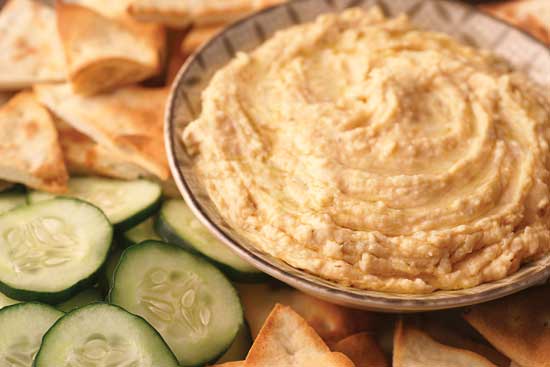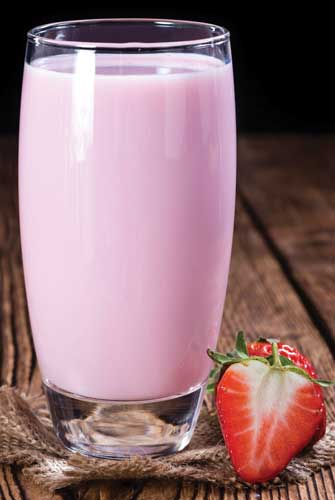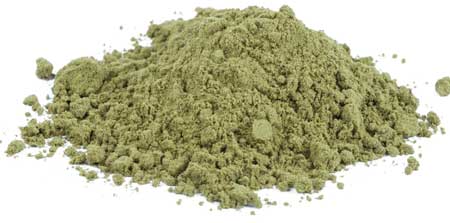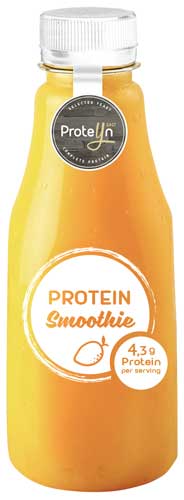A Primer on Proteins
NUTRACEUTICALS
 Protein is a beneficial nutrient for all age groups, from toddlers to seniors. Muscle building, muscle maintenance, and satiety are all areas where proteins play an important role. As consumers continue to seek out adequate amounts of protein for their diets and lifestyles, the industry has seen an evolution in protein ingredients, both in offerings and functionalities. Here is an overview.
Protein is a beneficial nutrient for all age groups, from toddlers to seniors. Muscle building, muscle maintenance, and satiety are all areas where proteins play an important role. As consumers continue to seek out adequate amounts of protein for their diets and lifestyles, the industry has seen an evolution in protein ingredients, both in offerings and functionalities. Here is an overview.
Dairy Proteins
Whey and milk proteins are a high-quality, complete source of essential and nonessential amino acids naturally found in dairy foods. Whey proteins are known to be one of the best sources of branched chain amino acids, including leucine, which has been shown to stimulate muscle protein synthesis (USDEC 2015). In addition to providing information and research on the functional and nutritional benefits of formulating with dairy ingredients, the U.S. Dairy Export Council, Arlington, Va. (thinkusadairy.org), also showcases unique applications for dairy proteins at the annual IFT food expo. Prototypes created last year included a samosa hybrid, cottage cheese mango dip, and a yogurt barley soup. Each featured ingredients such as whey protein and milk protein concentrates while also showing how these dairy proteins address consumer demands for clean labels, quality protein, and day-to-day convenience.
Dairy protein suppliers continue to offer functional protein ingredients that help formulators meet today’s trends. “The sports nutrition category has undergone dramatic growth from $6.7 billion in 2010 to $10.8 billion in 2015. This has been good news for dairy proteins, and whey in particular,” notes Anne Poulsen, sales development manager at Arla Foods Ingredients, Viby J, Denmark (arlafoodsingredients.com). “The value of the global whey protein market will be $13.5 billion in 2020, compared with $9.2 billion in 2015, representing a compound annual growth rate of 6.5% for the period.”
Poulsen expects whey protein hydrolysates to play a bigger role in the future development of the sports nutrition category. “Hydrolysates are premium proteins that have been finely chopped—or ‘predigested’—so they are absorbed more quickly by the body than standard proteins. This ensures they get to work faster on helping the muscles recover after exercise.” Arla launched Lacprodan HYDRO.365 into the sports nutrition category in 2012. This extensively hydrolyzed whey protein ingredient ensures rapid delivery of amino acids to the muscles to reduce recovery times from days to just hours. The company has also developed a portfolio of mildly hydrolyzed whey protein ingredients that are focused on delivering the benefits of hydrolysates to more consumers than ever before, taking hydrolysates into the mainstream. Targeting casual and fitness lifestyle users of sports nutrition, the ingredients in the new range include Lacprodan HYDRO.clear, a mildly hydrolyzed, acidified whey protein specially developed for crystal-clear beverages, and Lacprodan HYDRO.milk, a mildly hydrolyzed whey protein specifically designed for producing 100% whey-based, milky, high-protein drinks. Two others are Lacprodan HYDRO.gel, a mildly hydrolyzed whey protein tailored for use in protein gels, and Lacprodan HYDRO.power, a mildly hydrolyzed whey protein perfect for powder shake applications.
At the 2016 Health Ingredients Europe show, Glanbia Nutritionals, Dublin, Ireland (glanbianutritionals.com), spotlighted some of its protein ingredients. A High-Protein High-Fiber Bar featured BarPro modified milk protein isolate. BarPro delivers a unique texture while minimizing hardening of the bar.
Milk Specialties Global, Norfolk, Neb. (milkspecialties.com), recently expanded its organic dairy protein ingredient offerings with an instant organic whey protein with sunflower lecithin. Applications include nutritional powders, bars, ice cream, and ready-to-drink protein shakes. The company also supplies BARsoft dairy proteins, which are designed to provide a soft texture, optimal sensory experience, and extended shelf life in high-protein bars. This soy-free line of ingredients is composed of whey and milk protein isolates. Products made with the ingredient have excellent pliability and can last on the shelves for up to 12 months with significantly reduced browning and hardening.
 Soy Protein
Soy Protein
Soy protein is associated with heart health, but recent data has shown that it can an also work with dairy proteins in counteracting sarcopenia, muscle loss associated with aging. Borack et al. (2016) conducted a double-blind, randomized controlled trial with men aged 55–75. The subjects consumed 30 g of protein from whey protein isolate or a protein blend (25% isolated DuPont Danisco SUPRO soy protein, 50% caseinate, and 25% whey protein isolate) one hour after leg extension exercise. Muscle biopsies were taken at baseline (before exercise) and up to five hours after resistance exercise to monitor the breakdown and synthesis of muscle tissue using stable isotope methods. The soy-dairy protein blend induced amino acid delivery to muscle tissue and muscle protein synthesis and activated a recognized pathway that initiates muscle protein turnover. DuPont Nutrition & Health, St. Louis, Mo. (dupont.com), offers the SUPRO soy protein portfolio. This includes SUPRO XT 221D isolated soy protein with superior dispersibility.
Soy protein can also be added to products such as baked goods by using ingredients such as soy flour. Cargill, Minneapolis, Minn. (cargill.com), supplies soy flour and textured soy flour. Prolia soy flour ingredients are produced from high-quality soybeans, which are further processed into a variety of soy ingredients, including flour, flakes, and grits. At 50% protein, defatted soy flour can give a protein boost to recipes. Prosanté is textured soy flour that is available in a variety of particle shapes and sizes that can be used in processed meat to lower fat, add juiciness, and increase yield. It can also be used in a variety of other applications such as snacks and cereals. It has a protein content of 50%.
Plant Proteins
“By far, the most growth I see for plant protein usage is still in the ready-to-mix powder protein shakes and protein bars,” observes Allen Rillorta, director of protein and branded ingredient sales for AIDP, City of Industry, Calif. (aidp.com). “This comes via way of brands who are new to protein and are developing protein products with a healthy sustainable image to brands who already have an animal-based protein and are looking to expand their customer base by capturing plant protein consumers. We also continue to work with innovative companies who are finding uses for plant proteins in plant-based milks, meat analogs, cereals, mayonnaise, baked goods, yogurt, etc.”
 AIDP supplies a broad portfolio of plant proteins. PeasiPro is a high-quality pea protein providing a neutral taste and smooth texture. Pea protein provides a good source of lysine, which is usually deficient in rice proteins. Lysine cannot be made in the body and must therefore be consumed through the diet. Sprouted brown rice proteins include GABIOTEIN and RisaPro. Sprouting enhances nutritional benefits as well as other benefits over conventional rice protein. Advantein is a proprietary blend of rice and pea proteins that provides a complete amino acid profile. New plant proteins include Hemprotein hemp protein and Sachi Inchi, which is often referred to as the Inca nut or Inca peanut.
AIDP supplies a broad portfolio of plant proteins. PeasiPro is a high-quality pea protein providing a neutral taste and smooth texture. Pea protein provides a good source of lysine, which is usually deficient in rice proteins. Lysine cannot be made in the body and must therefore be consumed through the diet. Sprouted brown rice proteins include GABIOTEIN and RisaPro. Sprouting enhances nutritional benefits as well as other benefits over conventional rice protein. Advantein is a proprietary blend of rice and pea proteins that provides a complete amino acid profile. New plant proteins include Hemprotein hemp protein and Sachi Inchi, which is often referred to as the Inca nut or Inca peanut.
--- PAGE BREAK ---
Wheat Protein
Rillorta notes that currently new plant proteins are being used to augment nutritional protein in foods, but he expects to see more developments where plant proteins are manufactured and marketed to have specific uses as functional food ingredients. “For example, wheat protein is the number one selling plant protein, but we often see it being used more as a functional ingredient in bakery than we see it being used as an ingredient to augment protein nutrition.” AIDP supplies Wheatein, a gluten-free and whole food, vegan solution.
MGP Ingredients, Atchison, Kan. (mgpingredients.com), offers Arise wheat protein isolates. The line ranges in protein content from a minimum 85% to more than 90%. The company’s Optein, a lightly hydrolyzed wheat protein, can also be used in bakery products and as a partial egg white replacer. Compared to soy and whey proteins, Optein has higher glutamine content, which can be beneficial to muscle recovery after exercise.
Brown Rice Protein
Axiom Foods, Los Angeles, Calif. (axiomfoods.com), offers Oryzatein whole grain brown rice protein. It was clinically shown to be as good as whey protein to build muscle and is GRAS approved. It also offers increased satiety, has been shown to affect skeletal muscle hypertrophy in a geriatric population, and has shown a slower absorption than whey to aid in athletic endurance. It also is rich in leucine.
 Yeast Proteins
Yeast Proteins
Last year, LeSaffre Human Care, Marcq-en-Baroeul, France (lesaffrehumancare.com), launched Lynside ProteYn yeast proteins. It is a range of high-quality proteins derived from yeast. The ingredients are complete proteins containing all nine essential amino acids and compare well with other protein sources. Lynside ProteYn contains significant amounts of the branched chain amino acids leucine, valine, and isoleucine. With a high digestibility score, the yeast proteins are also packed with other micronutrients such as naturally occurring fibers, B-vitamin complex, and minerals (iron, zinc, calcium, magnesium, phosphorus, and potassium).
Algae Protein
Last year, AlgaVia Protein-Rich Whole Algae protein ingredient received regulatory approval from Health Canada for food use. The ingredient, which is manufactured by TerraVia, South San Francisco, Calif. (terravia.com), is unique among plant-based proteins as it is a whole food ingredient containing more than 60% vegan protein plus fiber, lipids, and micronutrients. The protein is protected by a natural cell wall, enabling it to be used to fortify challenging applications such as low-pH beverages, dressings, and crackers.
Pulse Proteins
Pulses are the dried seeds of plants from the legume family, and include peas, edible beans, lentils, and chickpeas. Pulses continue to grow in consumer favor thanks to their high protein content. World Food Processing, Oskaloosa, Iowa (worldfoodprocessing.com), offers PURISPea, with at least 80% protein. Packing a powerful protein punch, PURISPea also boasts a characteristic clean and nutty flavor, smooth mouthfeel, and easy digestibility. In April of last year, World Food Processing announced that it received a “letter of no objection” from the FDA for PURISPea unhydrolyzed and hydrolyzed pea protein. The “letter of no objection” confirms that the FDA does not question the GRAS status of pea protein.
Ingredion, Westchester, Ill. (ingredion.com), introduced four clean-taste, pulse-based, protein-rich ingredients last year. VITESSENCE Pulse CT 3602 faba bean protein concentrate, VITESSENCE Pulse CT 1552 pea protein concentrate, HOMECRAFT Pulse CT 1203 pea flour, and HOMECRAFT Pulse CT 2201 lentil flour enable manufacturers to expand the use of pulse ingredients in a broad range of applications. The VITESSENCE Pulse CT proteins contain 55%–60% protein on a dry basis. The HOMECRAFT flours offer different levels of fiber, starch, and protein and are naturally gluten-free.
Addressing the growing demand for plant proteins, Roquette, Lestrem, France (roquette.com), this January announced plans to build a new pea protein manufacturing site in Portage la Prairie, Manitoba, Canada. This large industrial unit will expand Roquette’s pea protein production capacity and help address the growing customer demand for plant-based proteins in North America and globally. Construction is expected to start in the second half of 2017, subject to obtaining the relevant permits. Roquette’s vegetable protein ingredients include NUTRALYS pea protein isolates and textured pea proteins.
Next month’s Nutraceuticals section will focus on nutrition for active lifestyles.
www.ift.org
Members Only: Read more about protein at ift.org. Type the keywords into the search box at the upper right side of the home page.
 Linda Milo Ohr,
Linda Milo Ohr,
Contributing Editor
Denver, Colo.
[email protected]
References
USDEC. 2015. “U.S. Dairy Proteins Overview.” U.S. Dairy Export Council, Arlington, Va. thinkusadairy.org/resources-and-insights/resources-and-insights/product-resources/us-dairy-proteins-overview.


